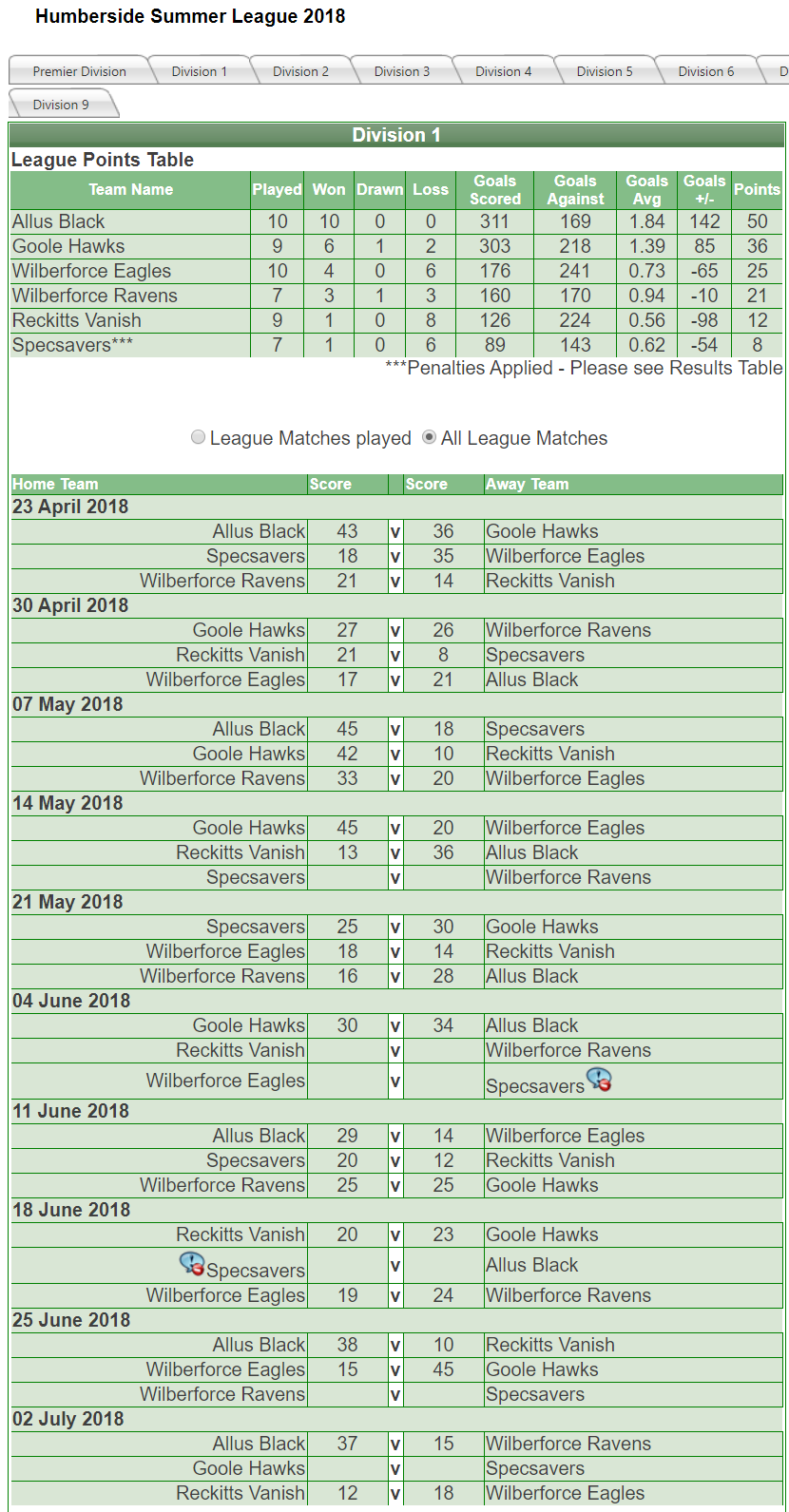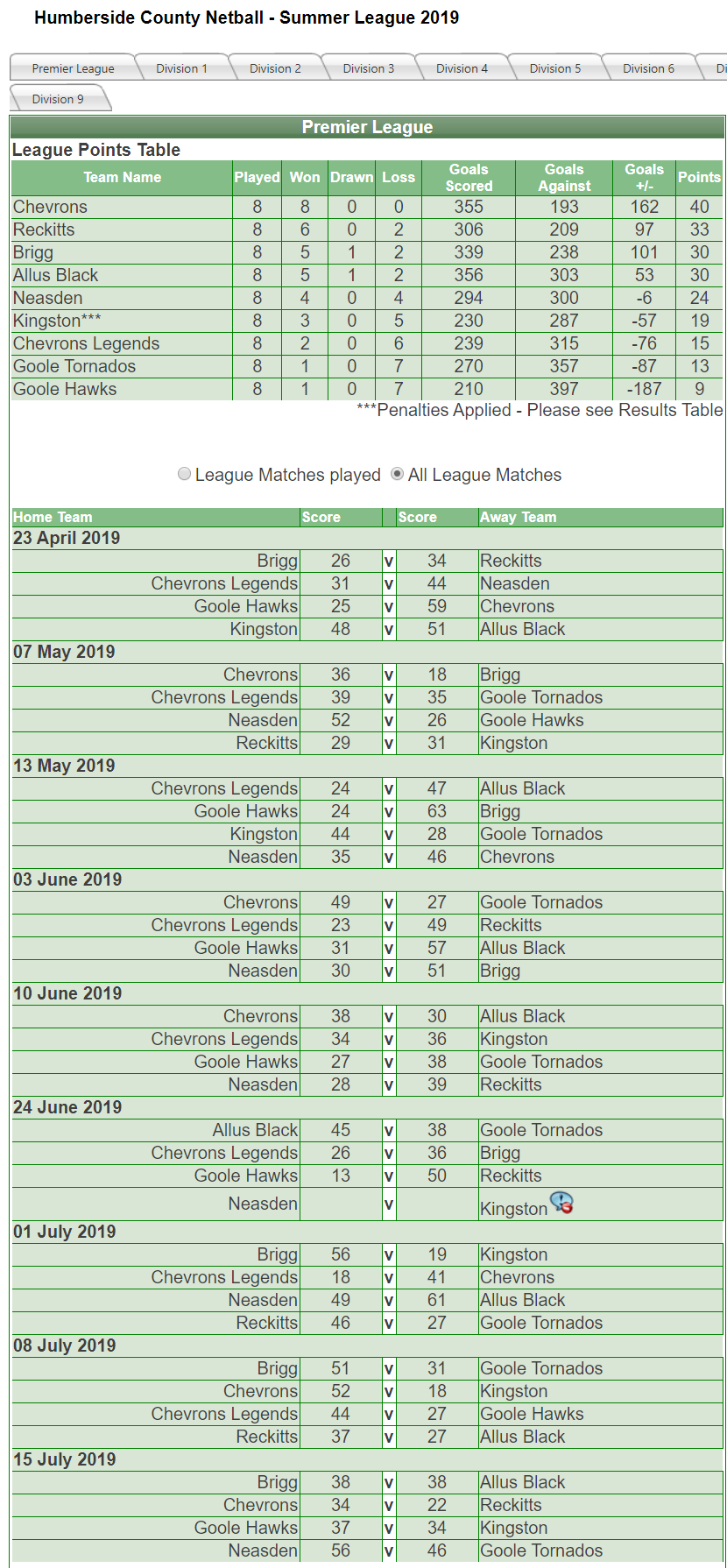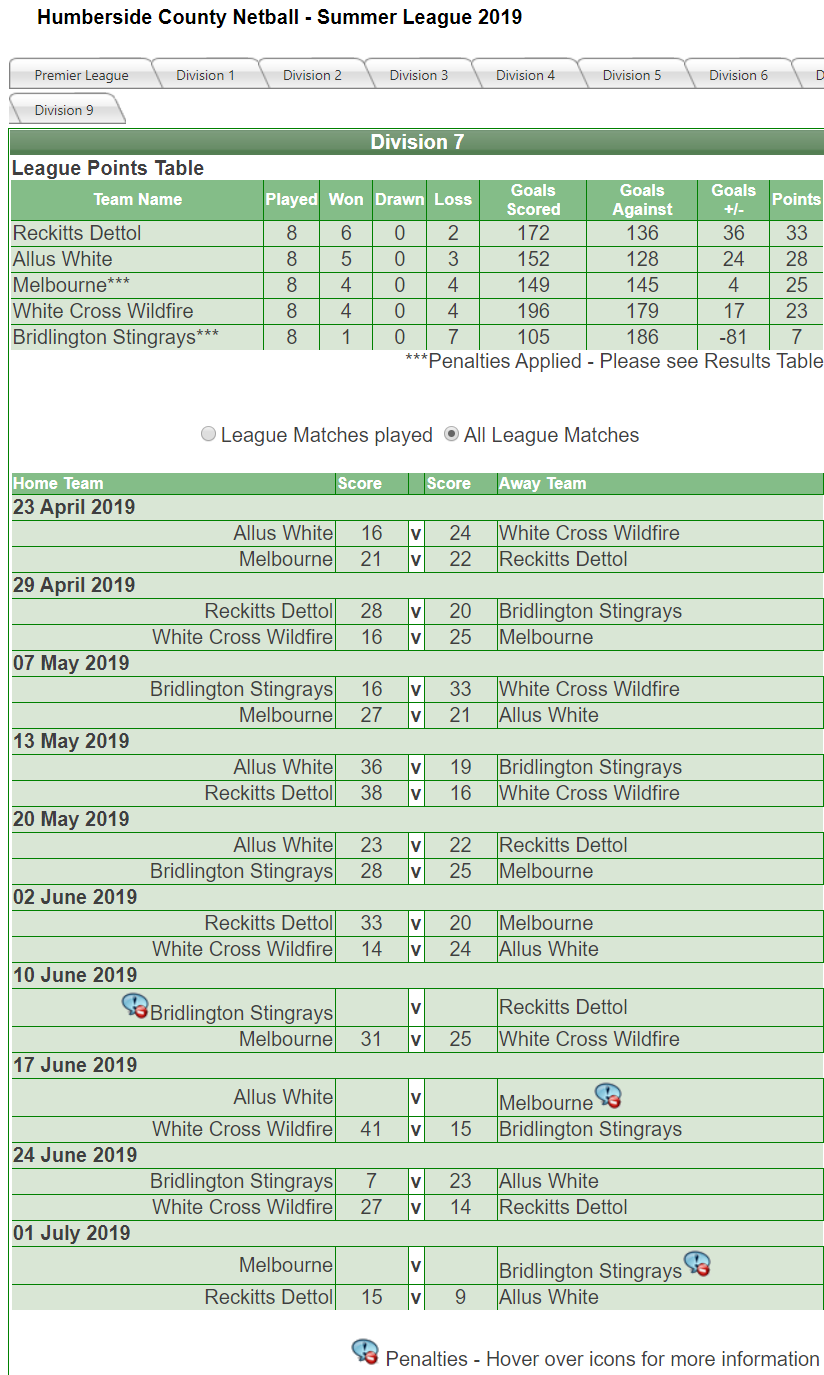The court
The court is divided up into three sections: DEFENSIVE, CENTRE and ATTACKING
Also marked on the court is the centre circle and two goal circles at each end.
Positions
GOAL KEEPER (GK) – You are the last line of defence; you guard the goal circle and the defensive third. you must stop the other teams goal shooter from scoring. You have to stay alert so you can collect rebounds after goal attempts & intercept passes. Goal Keepers are also responsible for taking throw-in’s from the goal line.
GOAL DEFENCE (GD) – You control the defensive third, the goal circle and the centre third. You must stop the opposition scoring and get the ball out of the danger area; you must have good skills of anticipation and awareness, so you can block passes and get the ball forward and out to your attacking players. The Goal Defence marks the other team’s Goal Attack.
WING DEFENCE (WD) – You patrol your defensive third and the centre thirds (but not the goal circle or your attacking third). Your job is to stop the ball reaching the oppositions attacking third and goal circle. Alongside your Goal Defence you must anticipate play and intercept passes, feeding the ball out and forward to your attacking areas. The Wing Defence marks the other teams Wing Attack.
CENTRE (C) – You can move in all three thirds (but not the goal circles). You help out both the defence and attacking players. You are mainly relied upon to create a link between your defence and attacking players, helping to shift the ball forward to your attackers and away from your danger area. Centres also restart the game each time a goal has been scored by making a pass from the centre circle. You also mark the other teams Centre player.
WING ATTACK (WA) – Your job is to create as many goal scoring chances as possible by passing the ball to your Goal Attack and Goal Shooter. You move in the centre third and attacking third (but not the goal circle or defensive third). You need to have solid passing and collecting skills and the ability to ‘open up’ space on the court.
GOAL ATTACK (GA) – You play in the centre third, the attacking third and goal circle. Your primary role is scoring and setting up goals. You feed balls to the Goal Shooter, but if the Goal Shooter is heavily marked then you will shoot (often from nearer the edge of the goal circle). You must have strong passing and shooting skills.
GOAL SHOOTER (GS) – You are only allowed in the attacking third and goal circle. You must have sharp shooting skills as your main job is to score goals. You have to be able to stay focused and react quickly, dealing with fast passes and reaching wide for rebounds.
Basic rules of netball
CONTACT – Netball is a non-contact sport. Players cannot make physical contact with one another on the court. If a player makes contact with another player and disrupts play, then a ‘penalty pass’ is awarded to the opposing team.
THE 1-METER RULE – Each player has to stand 1m(3ft) away from the player with the ball. From this distance a player can try and win the ball back, but only when it has left the players hands.
OBSTRUCTION – Players can defend a member of the other team who does not have the ball, but they cannot touch them or snatch the ball from them.
MOVING THE GOALPOSTS – If a player is caught leaning on the goal post then a ‘free pass’ will be given. But if a player deliberately moves the post, then the opposing team will be awarded an ‘penalty pass’.
THE 3 SECOND RULE – Players have a maximum of 3 seconds between catching the ball and making a pass.
BALL CONTROL – To gain control of the ball, a player can bat or bounce the ball once, but they cannot bat and bounce the ball, or do either more than once. It is also against the rules to push the ball into the air before batting and/or bouncing it. A Player has to be standing before they throw the ball – it is illegal to throw the ball when you are kneeling down.
MAKING SPACE – The player holding the ball must leave enough room for another person to move between their hands and those of the catcher, otherwise a ‘Short Pass’ penalty will be given. This rule effectively stops the ball from simply being handed from one player to the next.
FOOTWORK – One of the trickiest things in netball is to get footwork correct. Players are not allowed to run with the ball or dribble it. If a player catches the ball with only one foot on the ground then that foot is called the ‘landing foot’. A player can then choose to:
- step with the other foot,
- lift the landing foot and throw the ball simultaneously before the landing foot returns to the ground,
- pivot on the landing foot and move the other foot any number of times.
You are not allowed to move or hop on the landing foot until you have thrown the ball. If a player has both feet on the floor when catching the ball they will choose their landing foot and follow the rules as above.
COURT BOUNDARIES – Each player is only allowed in certain areas of the court, if you stray out of position you will be ‘offside’. A player can still be offside even if you don’t have the ball. The ball must be handled in each third of the court; a player cannot simply throw the ball from the defensive third to the attacking third.
TOSS UPS – When two opposing players come into simultaneous contact with the ball, the umpire will use a ‘toss up’ to restart the game. The two players face each other a meter apart while the umpire stands in-between them. The umpire then throws the ball (no more than two feet) into the air from just below the shoulder height of the shorter player. The first player to grab the ball wins possession. Toss up’s also help solve incidents on the court when the umpire is unsure exactly what happened.
FREE PASS – This is awarded if a player breaks a ‘minor rule’, the team awarded a free pass takes the pass from the same spot where the rule was broken, the opposing player can defend the pass.
PENALTY PASS – This is awarded if a more serious rule is broken, the team awarded a penalty pass take the pass from the same spot where the rule was broken, and the player who broke the rule stands out of the way (usually beside the opposing team player) until the pass is taken. If a player gives away a penalty pass in the goal circle then the Goal Shooter can take a free shot at goal.
THROW INS – If the ball goes off court, a throw in is awarded against the team who lost control of the ball. The opposing team will throw the ball back into play by the from the point where it went off court. When taking a throw in you place your foot up to, but not on, the sideline or backline of the court. The lines are considered part of the court; if any part of your foot is touching the line (or you step into the court in the process of taking the throw in) it will be classed as a foul throw. The opposing player is allowed to defend a throw in.
TAKING FREE PASSES, PENALTIES &/OR THROW INS – You have 3 seconds from taking position to take the free pass/penalty/throw in, but if you decide that another player would be better taking it, you MUST place the ball on the floor; if you hand or throw it to the other player it will be considered that the pass has been taken.


















